UDT Shorts, Silkies, and Ranger Panties: A Risqué Military Fashion Trend
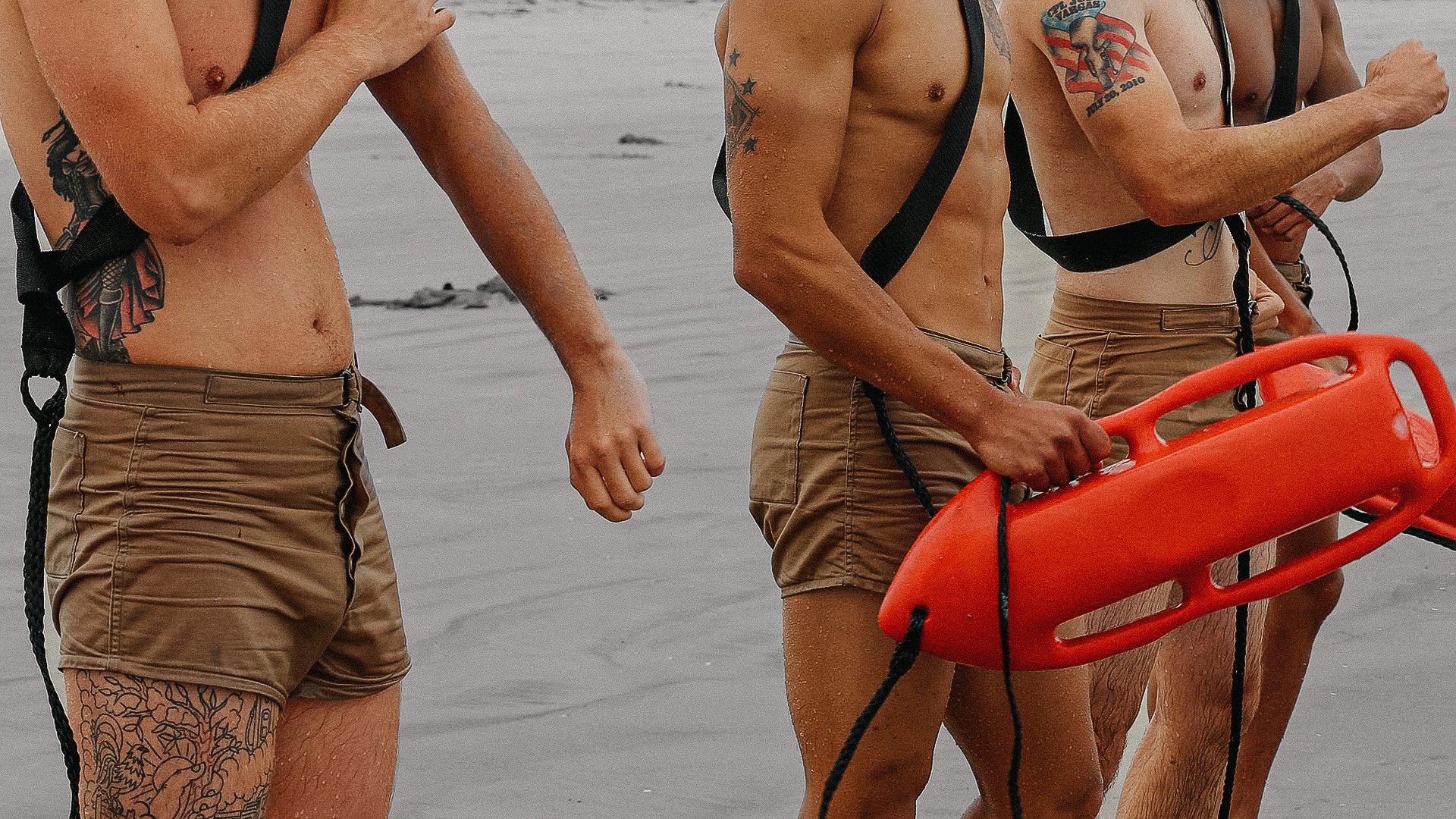
Marines attending the Marine Corps Instructor of Water Survival course wear UDT shorts, June 19, 2015. US Marine Corps photo by Sgt. Lillian Stephens.
Ensign Lewis Luehrs and Chief Petty Officer Bill Acheson, clad in P-42 Frogskin combat fatigues and armed with nothing except sketch pads, approached the island of Kwajalein in a small rubber boat. As they crept closer to the beach, outcroppings of sharp coral began to appear all around them. The coxswain worried that the coral might puncture the boat’s inflatable gunnel and refused to take the two frogmen any closer.
As members of Underwater Demolition Team 1, Luehrs and Acheson were experts in amphibious reconnaissance. Predecessors to the Navy SEALs, Underwater Demolition Teams (UDTs) were an elite special-purpose force established by the United States Navy during World War II. Its primary function was to reconnoiter and destroy enemy defensive obstacles on beaches. The teams’ demolition work and the intelligence they gathered were crucial to planning and executing successful amphibious assaults.
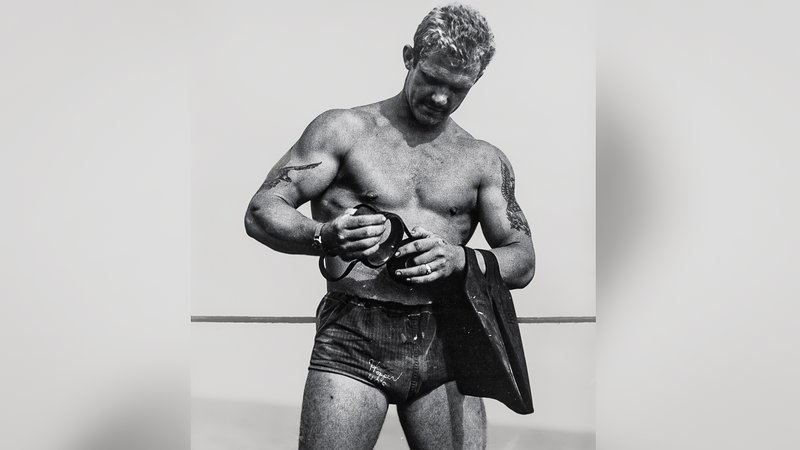
An underwater demolition swimmer checks his swim fins and face mask, during UDT operations at Balikpapan, July 3, 1945. US Navy photo.
The coral did not prevent Luehrs and Acheson from carrying on with their important mission. As the coxswain fretted about his boat, the two frogmen quickly stripped down to their skimpy 1940s-era swim trunks, donned goggles, and slipped into the water. The duo swam along the beach for 45 minutes, noting underwater obstacles and other enemy fortifications. Unburdened by their uniforms, they glided through the surf like a pair of otters.
Their mission accomplished, Luehrs and Acheson returned to the USS Monrovia. As time was of the essence, they went directly to the ship’s commander to deliver their report. Wearing nothing except their dripping-wet shorts, they explained that the island was surrounded by so much coral that the invasion force would need to hit the beach in amphibious tractors rather than flat-bottomed Higgins boats.
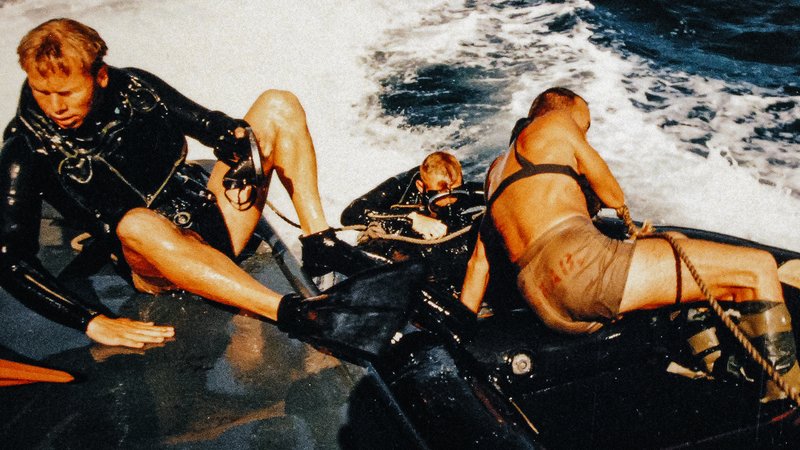
Sailors with Underwater Demolition Team 12 practice high speed recovery using a small inflatable boat, 1967. US Navy photo by JO1 James Johnson.
The information obtained by the two half-naked swimmers would ultimately prove so valuable that their actions that day changed military fashion forever. From then on, frogmen were authorized to wear a new special dive uniform: tiny swim trunks. And thus began the American armed forces’ love affair with short shorts.
Related: What It Means to Be a Navy SEAL, According to 5 SEALs
Small, but Tough
Luehrs and Achesons’ exploits in Kwajalein showed that for UDTs to more efficiently survey obstacles on beaches prior to amphibious landings, frogmen needed to operate without the hindrance of excessive clothing. Yet they also needed a uniform that was rugged enough to protect certain body parts when swimming through coral reefs and other natural obstacles. The solution was a pair of khaki shorts with a three-inch inseam.
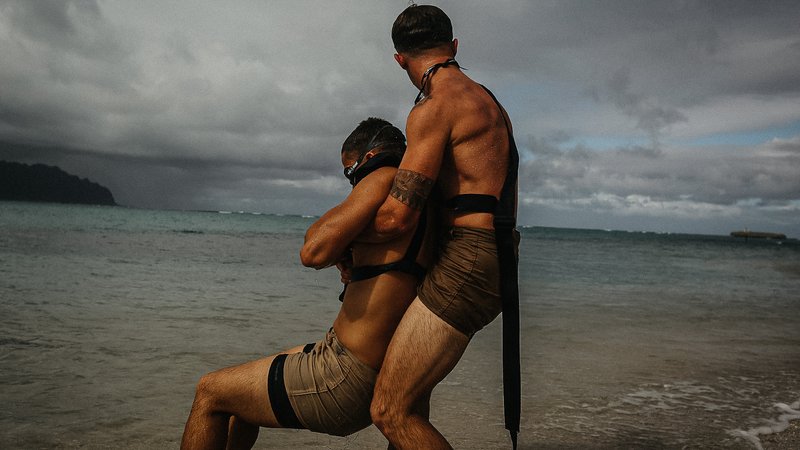
Marines practice water rescues in Kaneohe Bay, 2015. US Marine Corps photo by Lance Cpl. Zachary Orr.
The new military–issued shorts — officially called “Trunks, Swimmers” — featured an adjustable front poll strap with an anodized brass O ring, which eliminated the need for a belt. The little hip-huggers turned out to be a near-perfect uniform for waterborne operations — hence why sailors and Marines today are still issued the exact same design worn by their UDT forefathers.
Throughout World War II, UDTs proved themselves time and again to be invaluable to the successful execution of amphibious operations. And as their legend grew, so did the reputation of their tiny swim trunks. Although they were eventually replaced by the SEALs, the legacy of the original frogmen lives on in many ways, including in the shorts they made famous.
Related: Why Navy SEALs in Vietnam Wore Bluejeans Instead of Jungle Fatigues
Ranger Panties, Silkies, And the Joys of the Three-Inch Inseam
The famous shorts are no longer exclusive to elite special operators. In addition to sailors attending Basic Underwater Demolition/SEAL school, they are also issued to sailors and Marines in other amphibious occupations, such as scout swimmers, coxswains, and water survival instructors.
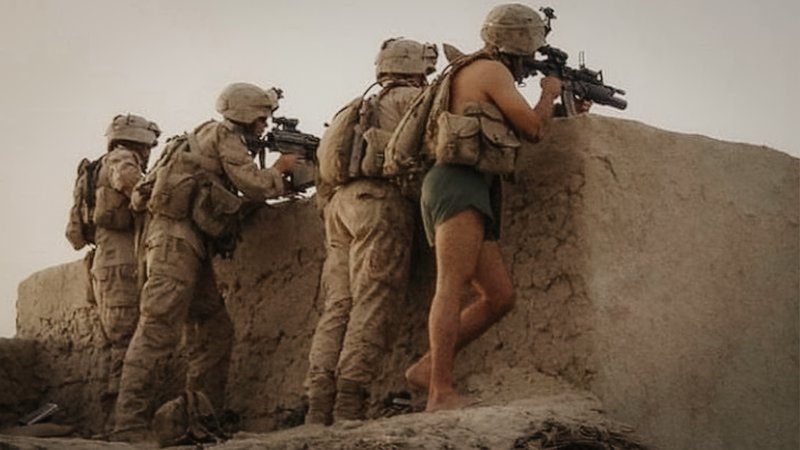
A Marine from 2nd Battalion, 8th Marines returns fire while wearing silkies. Helmand Province, 2009. Photo courtesy of Facebook.
UDT shorts might look like a relic of a bygone era, when men weren’t afraid to show off a little thigh, but in fact they have only become more popular with time. Other standard-issued uniform bottoms by the different branches of the US military have since been adapted to include the short’s same minuscule inseam that toes the line of inappropriate.
There are also the infamous “Ranger panties” often sported by soldiers. The small athletic shorts were once part of the Army’s standard physical training uniform. Today, soldiers are issued longer shorts that are considerably baggier, but Ranger panties remain in vogue. They are typically black with a unit logo embroidered on the thigh.
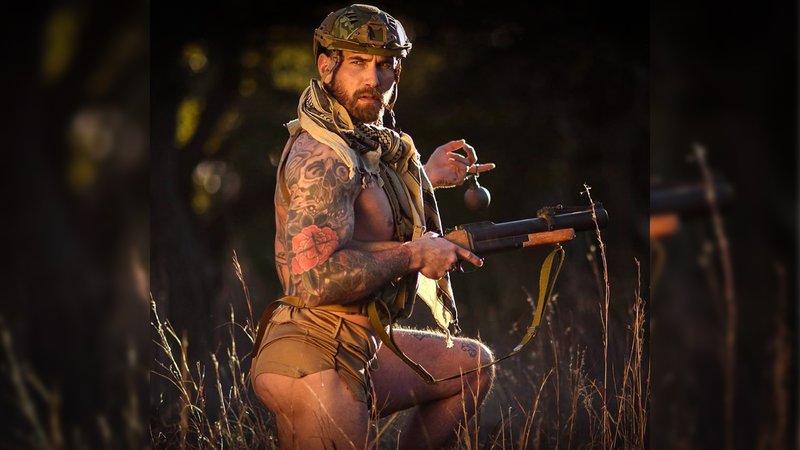
Former Army Ranger Mat Best poses in a pair of gold Ranger panties. Photo courtesy of Black Rifle Coffee Company.
The Marines have their own version of Ranger panties, except they call them “silkies.” Although silkies are no longer authorized for physical training, Marines refuse to relinquish the tradition of wearing them. Anyone who has ever worn a pair will understand why.
Military life is rife with rules and restrictions, and wearing tiny shorts feels like something close to autonomy. And once you’ve experienced that silky-smooth freedom, it’s hard to go back.
Read Next: Behind the Monument: ‘The Naked Warrior,’ Legendary Predecessor of Navy SEALs
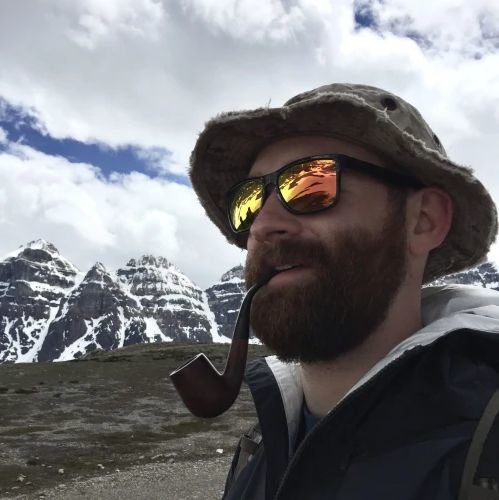
Mac Caltrider is a senior staff writer for Coffee or Die Magazine. He served in the US Marine Corps and is a former police officer. Caltrider earned his bachelor’s degree in history and now reads anything he can get his hands on. He is also the creator of Pipes & Pages, a site intended to increase readership among enlisted troops. Caltrider spends most of his time reading, writing, and waging a one-man war against premature hair loss.
BRCC and Bad Moon Print Press team up for an exclusive, limited-edition T-shirt design!
BRCC partners with Team Room Design for an exclusive T-shirt release!
Thirty Seconds Out has partnered with BRCC for an exclusive shirt design invoking the God of Winter.
Lucas O'Hara of Grizzly Forge has teamed up with BRCC for a badass, exclusive Shirt Club T-shirt design featuring his most popular knife and tiomahawk.
Coffee or Die sits down with one of the graphic designers behind Black Rifle Coffee's signature look and vibe.
Biden will award the Medal of Honor to a Vietnam War Army helicopter pilot who risked his life to save a reconnaissance team from almost certain death.
Ever wonder how much Jack Mandaville would f*ck sh*t up if he went back in time? The American Revolution didn't even see him coming.
A nearly 200-year-old West Point time capsule that at first appeared to yield little more than dust contains hidden treasure, the US Military Academy said.












